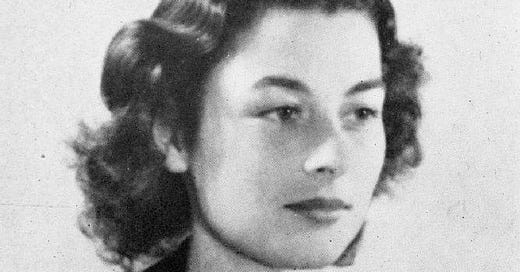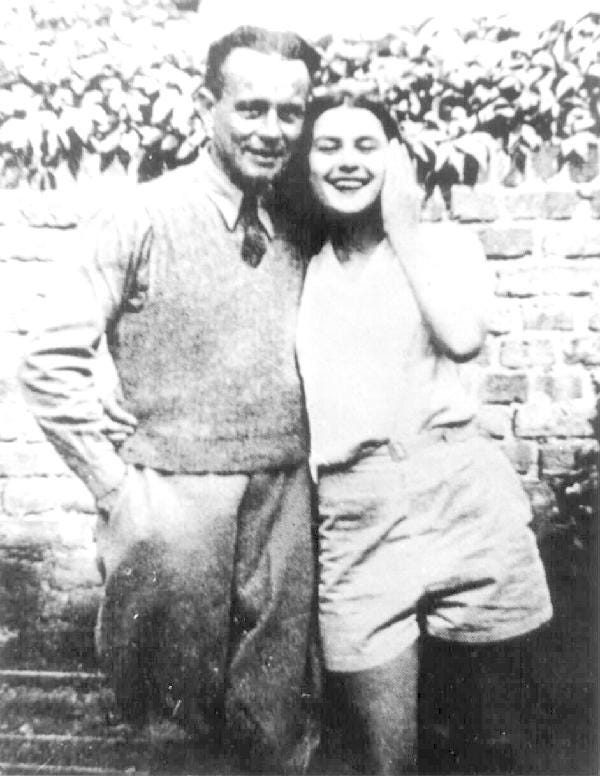A few years ago, we caught a film called Operation Mincemeat at the Greenwich Picturehouse. Despite the fascinating plot, the cinema was a bit sparse that evening and sparse enough that a conversation was started afterwards with two fellow moviegoers.
The narrative - both movie and real life - of Operation Mincemeat was thus:
The operation was a British intelligence deception during the Second World War in 1943, aimed to disguise the Allied invasion of Sicily by convincing German forces that Greece and Sardinia were the actual targets. Developed by British intelligence officers Ewen Montagu and Charles Cholmondeley, the plan received approval from Prime Minister Winston Churchill and was inspired by a concept originally suggested by Ian Fleming, who later created James Bond.
The operation centred around a deceased Welsh homeless man, Glyndwr Michael, whose body was transformed into ‘Major William Martin’ of the Royal Marines. This corpse, dressed in military uniform with a briefcase containing false documents chained to his wrist, was dropped off the Spanish coast by a Royal Navy submarine in April 1943. Spanish authorities recovered the body and, as anticipated, German intelligence gained access to the planted documents.
The operation proved remarkably successful. Hitler was convinced by the deception, declaring that Sicily was not the next landing target and redirecting significant military resources to Greece and Sardinia.
To enhance credibility, British intelligence created extensive personal items for "Major Martin" including letters, theatre tickets, and other personal effects that gave depth to this fictional persona.
The fellow moviegoers were a husband and wife, and when I said that a conversation was begun, it was actually quite a one way thing. As we were walking out of the cinema, the man said to us: “That photo used for William Martin’s official ID document. Well that was of my Dad”. We exchanged pleasantries and the couple went left and we walked right. Only when we discussed the encounter did we formulate questions that we might have asked. Who was your Dad? Was he in the Operation Mincemeat intelligence team? What else did he tell you?
But they’d gone and it was too late.
This week it was the 80th anniversary of VE Day and we are getting to the point where the young children held atop their Dad’s shoulders in the Piccadilly Circus and Buckingham Palace crowds on 8 May 1945 are only perhaps still with us and the majority of the others seen in contemporary movies of the celebrations are not. David Attenborough celebrated his 19th birthday on 8 May 1945 and his 99th birthday on 8 May 2025.
Like the gentleman in the cinema, most of the Second World War stories are now told at least a generation’s remove. I spent too much time as a younger person not talking to my grandparents, Mum and Dad, aunts and uncles, elderly neighbours, about their experiences. I had other interests then which seem irrelevant now. And what I’d want to ask of family about those days? Well I’ve missed the boat.
Too late once again.
There were countless individual stories of the Second World War. Our own families are sometimes marked by small acts of heroism, bombed homes, ARP wardens, sheltering in tube stations, being in the services, evacuations to the countryside…
Some of those stories really should be better known and it’s perhaps up to us to dig them out of our family histories and retell them.
Some others have become better known due to movies such as Operation Mincemeat
The tale of the homeless Glyndwr Michael - who was turned into Major William Martin - would have been completely forgotten but for the autobiography of Ewen Montagu. Glyndwr Michael now has has own memorial where he was buried in southern Spain.
We can also thank local councils needing many names for new post-war blocks of flats for having a knowledge of then-recent local history.
While researching my London street name project a few years back I came across what was for me a very unusual name - Violette Szabo House - in West Norwood. It was part of an estate built by Lambeth Council in 1964 and called the Vincennes Estate.
On the Vincennes Estate is a memorial sundial erected "in memory of the resistance heroes of Vincennes, France, including Violette Szabo, a Lambeth girl, and Lilian Rolfe, whose father lived in Knatchbull Road."
I spent an afternoon researching who Violette Szabo was, and this is her story.
Violette Szabó was born Violette Reine Elizabeth Bushell on 26 June 1921. Her father came from the area but her mother was French.
Violette grew up as an outwardly typical south Londoner in Stockwell but her school holidays were spent in France with her relatives. As a result she developed a complete fluency in both French and English.
She was eighteen when the Second World War broke out. The family was living in Burnley Road, SW9 but like many London lives, hers then took a new path.
Etienne Szabó was a French Foreign Legion officer of Hungarian descent who came to London during the fall of France in 1940. His English language skills were not so good at the time (but rapidly improved). He met the French-speaking Violette Bushell and the two had a whirlwind romance. They married in August 1940.
Etienne Szabó was a devoted legionnaire with exceptional leadership abilities. He found his way quite quickly into military service in his new country and took part in a covert operation in Norway before commanding troops with remarkable valour in Bir Hakeim and El Alamein amongst other engagements in North Africa.
Violette and Etienne’s daughter, Tania was born in June 1942.
On 24 October 1942, Etienne fell whilst guiding his men in a deception strategy at El Himeimat, south of El Alamein.
He was posthumously awarded the Médaille Militaire, Croix de Guerre with Star and Palm and the Colonial Medal. But after just two years of marriage during which he had mostly been absent, he had left Violette a widow at the age of 21.
The Special Operations Executive (SOE) was a secret British organisation formed to conduct espionage and sabotage in occupied Europe.
Violette’s daughter Tania describes her mother’s path to becoming a covert operative for the SOE. Etienne died on a mission of deception in October 1942 and by early the following year Violette was recruited by the SOE, whose whole aim was deception.
Records released later describe Violette’s notable determination to play a part in the war effort after the death of Etienne. Violette Szabó’s bilingual abilities made her an ideal candidate.
First mission
After rigorous training, Violette and her SOE commander Philippe Liewer were flown into German-occupied France on the night of 5 April 1944, landing near the village of Azay-le-Rideau in the Loire Valley. Their mission, codenamed ‘Salesman,’ involved gathering intelligence and trying to re-establish contact with resistance networks in the Rouen area that had been compromised by Gestapo arrests.
After approximately one month of dangerous undercover work, Violette successfully completed her mission. She had gathered valuable intelligence on German war infrastructure and even treated herself to a shopping trip in Paris, buying a black dress.
Though she injured an ankle, Szabó and Liewer returned safely to England together via a clandestine Westland Lysander flight from a secret landing strip in France.
She reported back to the SOE that over one hundred French Resistance workers had been captured by the Gestapo, and that Liewer's network was effectively crushed.
Second mission
Her second mission began on 7 June 1944, the day after D-Day. She parachuted into south-west France, near Limoges, to establish a new resistance network. This mission was codenamed ‘Salesman II.’
Her three teammates included her previous commander Philippe Liewer, American Army Lieutenant Jean-Claude Guiet as wireless operator, and Bob Maloubier who would serve as military instructor.
Just a few days into this mission, on June 10, tragedy struck. Violette was on a courier trip with a resistance leader known as 'Anastasie'. As their car approached Salon-la-Tour, they came across a German roadblock. When they attempted to flee, Szabó and her companion engaged in a gunfight. Szabo's previously injured ankle hampered her escape, and despite her bravery in battle, she was eventually captured only when her ammunition ran out.
Despite brutal interrogation, she revealed nothing to her captors.
Szabo was transferred to Ravensbrück concentration camp, where she endured horrific conditions of torture before being executed on or about 5 February 1945, aged just 23.
For her extraordinary courage, she was posthumously awarded the George Cross, one of Britain's highest decorations for gallantry, and the Croix de Guerre by the French government. Her life story was later immortalised in the film ‘Carve Her Name with Pride’ and through various biographies.
But for me, I came to know Violette Szabó’s story simply because Lambeth Borough Council named a block of flats after her and I came across it.
There are many stories of the Second World War and at time of writing this post a few are being told. If you already knew of the heroism of Violette Szabó, I’m happy to tell her tale anew. If you didn’t, I hope this helped mark her life. One of many lives of the Second World War.
NOTES
There are two other blocks on the Vincennes Estate, SE27 named after SOE heroines.
Lilian Rolfe House was named after Lilian Rolfe (1914-1945), a wireless operator for the SOE's Historian Network in France. Born in Paris to British parents, she was fluent in French and trained as a wireless operator before being dropped into France in April 1944. Like Violette Szabo, she was captured, imprisoned at Ravensbrück concentration camp, and executed in February 1945.
Odette House commemorates Odette Sansom (later known as Odette Churchill and then Odette Hallowes). Born in France but married to an Englishman, she joined the SOE in 1942, leaving behind her three young daughters. She was sent to France where she worked as a courier for the Spindle network.
She was arrested in April 1943 after being betrayed, and then subjected to brutal torture by the Gestapo, revealing nothing about her fellow agents. She was sent to Ravensbrück concentration camp but remarkably survived the war.
Odette Sansom was also awarded the George Cross by the United Kingdom and the Légion d'honneur by France. Her story became widely known through a 1950 film titled ‘Odette’ starring Anna Neagle.







Thank you for bringing the story of Violette Szabo to my attention, Scott. I wasn’t aware of her until now. What incredible bravery. I watched ‘Carve Her Name With Pride’ last night. According to Wikipedia, it was one of the most successful British films that year, which means Ms Szabo’s name must have been widely known until well after the war. But time passes and once-familiar names become obscure. Thank you again for telling this story. I plan a modest pilgrimage next time I’m in London to visit her blue plaque, the SOEs sculpture on the Embankment at Lambeth Palace, and to visit the mural in Stockwell.
She’s also commemorated with a mural in Stockwell, on the side of the deep-level shelter building; and also with a mosaic portrait on the side of Morley College.